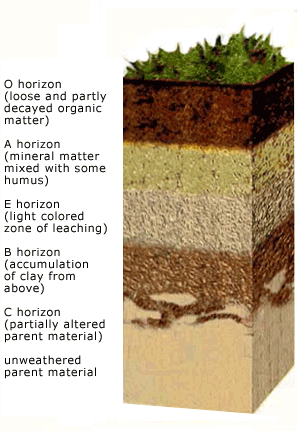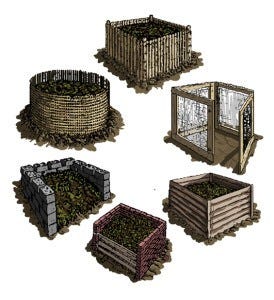Historically, food has usually been grown both locally and in a decentralized system; in the form of kitchen/cottage gardens. Progressively we stopped growing food individually and began to trust the growing of safe and healthy food to someone else, or as the government’s responsibility.
Now that the major agricultural companies have demonstrated that they have no incentive to grow safe food or practice ecological sensibility, people are again reconsidering the value of growing their own food, using natural practices and traditional knowledge systems. We are witnessing a renaissance of food gardens, seed saving, converting kitchen biodegradable wastes into compost, cultivating indoor plants for fresh air and aesthetic soul-food, and even as part of school and community development programmes.
The emerging fields like biomimicry encourage us all to return to natural systems; this is not only useful for innovation in design but is also a lens to learn how plants grow naturally in a wide variety of ecosystems. There is an endless source of inspiration when we open our eyes to the brilliance of designs which nature has perfected through evolution over billions of years. Using nature’s guidance, we can grow a wide variety of food in a small space while also using less inputs — including physical labour.
Designing a system which imitates nature’s ability to decompose, store water and provide access to sunlight for as many plants as possible allows us to maximize our land, minimize our effort and ultimately yields far more tasty, healthy food — as well as medicine, fiber, fodder, fuel and producing clean air and water supply.
Designing low maintenance soil
If we cut any piece of so-called-soil (the upper layer of earth) straight down, we observed multiple layers, formed over the course of time, called the soil profile/horizon as demonstrated in this image:
Image providing by EarthCache & Park Friendly Caching
Second on the forest floors, where leaves are falling from treetops constantly, as well as twigs, old broken branches, flowers, seed pods and all sort of natural materials, this ‘organic matter’ accumulates and over time decomposes into what we call humus (dark-brown amorphous complex carbon ‘dirt’). This humus is destined to become topsoil, a substance full of rich minerals and vitamins which also retains water. Through the process of decay, dead matter transforms into food for insects, bacteria and fungi — supporting the health of the soil and naturally sustaining the soil ecosystem.
These features of soil-profile and forest floor could be emulated to cultivate low maintenance soil where we can grow food in-situ or in containers where there is not a lot of land to grow our food. Such designs could be easily replicated in raised beds or hugelkultur beds or to design low maintenance containers for public and community gardens where land, labour and personal attention are often scarce resources.
Designing low maintenance containers
Examples of some containers where you may grow your soil.
First layer: Drainage.
At the bottom of your container, put a layer of gravel and small stones/pebbles. This promotes adequate drainage and keeps roots from being damaged in case of over-irrigation and heavy rains. Second, this layer anchors deep rooted plants and provides minerals for the plants. Depending on the size and depth of your container, the drainage layer can be about 5–10% of the total height of container by volume.
Second layer: Carbon
This is a layer of ‘dry matter’. Any carbon rich material including garden leaf-litter, farm residue such as dry grass clippings/chaff, softwood twigs, or activated charcoal could be used.
Third layer: Nitrogen
Materials rich in nitrogen and low in carbon, e.g. kitchen waste, peels, tea leaves, chopped green manure, and fresh-animal dung can be placed over the carbon layer.
As we want to design low maintenance containers which does mean in practice is a system of design which requires zero-till, maximum intervals between subsequent irrigations, requiring far less external fertilization (effective micro-organisms such as compost tea may still be used at intervals), and effectively no weeding (particularly in zero-maintenance-containers). So, carbon-nitrogen layers functions as the heart of these zero-maintenance containers by acting as a micro-soil-ecosystem collectively.
Carbon-nitrogen layers decompose over a brief period, and act as a regenerative micro-ecosystem in your container. Over time, the volume of these layers would shrink and develop cracks in the growing layer above; promoting natural tillage, aeration and soil-activity.
Together, the decomposed carbon-nitrogen layers would take up 20–30% of the total height container. These layers are harder to accommodate in shallow containers, so choose a design with sufficient depth.
Fourth layer: Growing Medium
The growing medium layer could be designed using readily available local soil, compost and soil-amendments (e.g. natural calcium or other minerals) in adequate proportion. This is the main supportive layer where seeds or plants are being sown. This layer will use 50–60% total height of the container.
Fifth layer: Mulch
Mulch sits above the soil, around the area where seedlings/plants are growing. Mulching has multiple benefits; it retains moisture in the soil, regulates temperature, minimises conditions for weeds to grow and prevents damage caused by natural elements. No forest floor is left bare: why should our fields or garden beds look any different?
To cover the soil, you may wish to sow very short edible plants e.g. fenugreek, spinach, nasturtium, coriander or microgreens. Edible legumes such as alfalfa and fenugreek are particularly useful as a bio-mulch, since these plants fix nitrogen in the soil for the other plants to enjoy.
Alternatively, you can sprinkle any organic material e.g. dry grass clippings, broken egg shells, dry leaves, chopped straw etc, which will break down and feed the soil with further nutrients.
What value can this design offer you?
- Many herbs, vegetables and edible shrubs can be grown in zero-maintenance containers.
- These biomimicked solutions can be deployed to design numerous containers and soil-mediums for urban food gardening where land, labour and personal attention is limited.
- You don’t have to interfere so much; let nature do most of the work and simply support it by checking the moisture and occasionally adding more mulch, diluted worm juice or compost tea. Simple!
Originally this article was co-written by Vipesh Garg and Naomi Joy Smith in medium.
https://medium.com/@vipeshgarg/how-biomimicry-can-be-used-to-grow-low-maintenance-gardens-2a352293de56





No comments:
Post a Comment